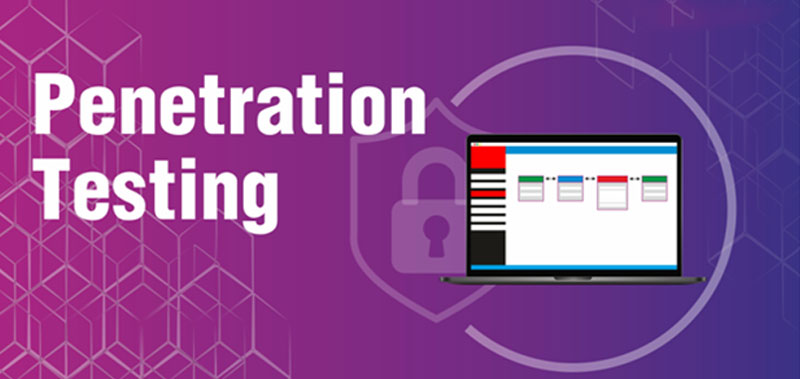Penetration Testing Interview Questions and Answers
Several prominent factors are there that lure many interested individuals to come and learn penetration testing fundamental concepts under the prime guidance of favorable training professionals having many years of classic work experience. In this regard, the candidates who have successfully learned the penetration testing best practices and are willing to test their skills by undergoing an interview session should opt for this set of superb Penetration Testing Interview Questions and Answers piled up by Bytecode Security, the Best Cybersecurity Training Institute in Delhi.
With many years of trainers’ experience in training many students, both beginners and skilled professionals, Bytecode Security has collected these given Penetration Testing Interview Questions and Answers in this detailed article.
Here are the mainstream Penetration Testing Interview Questions and Answers given in the following:
1: What is Penetration Testing (Pentesting) A Complete Guide?
Penetration Testing is the general process of simulating sudden cyber attacks via various methodologies on a computer system, network, web, or mobile application in order to track down possible security flaws or vulnerabilities that malicious threat actors could generally exploit. It is a sincerely controlled and authorized assessment that helps organizations improve their security posture.
Moreover, as the name suggests, a complete guide on penetration testing or pentesting is a set of whole features and steps that are included to perform a penetration testing task by an experienced penetration testing professional.
2: Why is Penetration Testing important?
Penetration testing is important because it helps organizations:
- Finding and fixing security flaws in advance, before they may be exploited by attackers, is a proactive security measure.
- Confirm that the security controls that are currently in place are effective.
- Their capacities to respond to incidents should be improved.
- It is important to have a deeper comprehension of their total security posture.
3: What are the 5 steps of pentesting?
The 5 main steps of a penetration testing engagement are:
- Reconnaissance,
- Enumeration,
- Exploitation,
- Post-exploitation,
- Reporting, etc.
4: What is Penetration Testing and How Does It Work?
Penetration Testing is the general process of simulating sudden cyber attacks via various methodologies on a computer system, network, web, or mobile application in order to track down possible security flaws or vulnerabilities that malicious threat actors could generally exploit. It is a sincerely controlled and authorized assessment that helps organizations improve their security posture.
It works by completing the following steps:
- Reconnaissance,
- Enumeration,
- Exploitation,
- Post-exploitation,
- Reporting, etc.
5: Differentiate between Vulnerability Assessment and Penetration Testing.
For the purpose of vulnerability assessments, automated technologies are utilized to search for known vulnerabilities in systems. The purpose of penetration testing is to determine the actual danger that a vulnerability poses. This testing extends beyond scanning and includes manual exploitation attempts.
6: What are the different types of Penetration Testing?
There are different types of pentesting based on target and approach:
- Black box,
- White box,
- Gray box,
- Web application testing,
- Network penetration testing,
- Wireless penetration testing, etc.
7: Explain the phases of a Penetration Testing Engagement.
The main phases of a Penetration Testing Engagement are as follows:
- Reconnaissance,
- Enumeration,
- Exploitation,
- Post-exploitation,
- Reporting, etc.
8: How do you identify open ports on a target system?
A number of different tools are available for determining which ports on a target system are open. In the realm of network discovery and enumeration, Nmap is a widely used program that is both open-source and free to use.
9: What are some common web application vulnerabilities?
Some common web application vulnerabilities include:
- SQL Injection (SQLi),
- Cross-Site Scripting (XSS),
- Broken Authentication,
- Insecure Direct Object References (IDOR), etc.
10: Describe your experience with penetration testing tools.
This has to be answered by the candidate as per one’s experience with a certain penetration testing tool(s).
11: How do you stay up-to-date on the latest vulnerabilities and exploits?
By following the below-mentioned steps, I can stay up-to-date on the latest vulnerabilities and exploits:
- Security news websites and blogs.
- Vulnerability databases (e.g., CVE Details, National Vulnerability Database).
- Security conferences and workshops.
- Mailing lists and forums focused on security.
12: What are the functions of the Java applet popup in penetration testing?
Although Java applets are not as prevalent as they once were, there is a possibility that exploiting weaknesses in the Java Runtime Environment or engaging in social engineering attacks could be accomplished through their use.
13: Explain the benefits and drawbacks of Linux OS and Microsoft Windows for web application Testing?
Linux:
| Benefits | It is frequently used for web servers since it is open-source and allows for greater customization. |
| Drawbacks | In order to use it successfully, it may require further technical expertise. |
Windows:
| Benefits | User-friendly, with a greater variety of tools accessible to choose from. |
| Drawbacks | The cost of licenses can be high, and they might not be as secure as Linux by and large. |
14: How would you perform a social engineering attack (without going into illegal activities)?
For the purpose of determining whether or not consumers are susceptible to social engineering, it is possible to send phishing emails or create bogus websites. It is imperative that this be carried out in accordance with the legal boundaries and only after receiving the client’s express authorization.
15: What steps do you take to cover your tracks during a penetration test?
Penetration testers should always follow the below-mentioned tasks to cover your tracks during a penetration test:
- It is common for penetration testing programs to include logging capabilities that may be disabled. Nevertheless, this should only be conducted with the client’s consent and documented in the final report.
- When feasible, employ authorized accounts for testing. This reduces the necessity of establishing new accounts that could potentially arouse suspicion.
- Eliminate any temporary files or records that were generated during the test. This guarantees that the system is returned to its original condition.
- Ensure that all actions conducted during the test are documented. This enables the reconstruction of steps if necessary and demonstrates responsible testing practices.
16: What’s the difference between a vulnerability assessment and penetration testing?
In order to conduct vulnerability assessments, automated technologies are employed to identify known vulnerabilities in systems. The objective of penetration testing is to ascertain the genuine threat that a vulnerability presents. This testing encompasses manual exploitation attempts in addition to scanning.
17: How do you write a clear and concise penetration testing report?
The following should be included in a concise and lucid penetration testing report:
- Executive Summary,
- Methodology,
- Findings,
- Recommendations,
- Appendix, etc.
18: What are the ethical considerations of penetration testing?
Penetration testers must adhere to ethical guidelines, such as:
- Authorized systems may only be tested with written authorization.
- Ensuring the privacy of all client data.
- Refraining from exploiting vulnerabilities that exceed the agreed-upon scope.
- Promptly communicating all discoveries to the client.
19: How do you handle a situation where you discover a critical vulnerability during a pen test?
If you discover a critical vulnerability, you should:
- Inform the client contact of the discovery at once.
- Collaborate with the client to define a strategy for the rapid containment and remediation of the vulnerability.
- Thoroughly document the discovery in the final report.
20: What is your approach to documenting and reporting vulnerabilities?
I would employ an amalgamation of standard formats and customization that is tailored to the specific engagement in order to document and report vulnerabilities. The following is a detailed explanation:
Standardized Formats:
- Common Vulnerability Scoring System (CVSS),
- CWE Classification,
- Templates, etc.
Customization:
- Engagement Specifics,
- Technical Details,
- Visual Aids, etc.
21: Describe a challenging penetration testing experience.
I initially identified several low-hanging vulnerabilities, such as SQL injection (SQLi) deficiencies in login forms and cross-site scripting (XSS) in user profiles, during a web application penetration test for an extensive e-commerce platform. The development team promptly resolved these issues.
The genuine obstacle was the attempt to obtain unauthorized access with a higher level of privilege. The system was equipped with a variety of effective security mechanisms, such as:
- Multi-factor authentication (MFA),
- Web Application Firewall (WAF),
- Secure coding practices, etc.
Overcoming the Challenge:
I decided to shift focus and delve deeper into the application logic. Here’s what I did:
- Manual Code Review,
- Business Logic Flaws, etc.
22: How do you stay motivated and keep learning new things in cybersecurity?
To stay motivated and keep learning new things in cybersecurity, I need to adopt some ways, such as:
- Establish learning objectives and personal targets.
- Engage in online forums and communities.
- Participate in security seminars and conferences.
- Acquire certifications to verify your abilities.
- Examine security blogs and research papers.
23: What’s the difference between symmetric and asymmetric encryption in penetration testing?
The basic difference between symmetric and asymmetric encryption in penetration testing is mentioned below:
- Symmetric encryption: Employs the same confidential key for both encryption and decryption. It is frequently more efficient; however, it necessitates a secure key exchange.
- Asymmetric encryption: Utilizes a public key for encryption and a private key for decryption. It is more safe for key exchange, but it may be sluggish.
24: What are your salary expectations for Pentesting?
In India, the penetration tester’s salary in India ranges between ₹2.2 LPA to ₹19 LPA with an average annual salary of ₹7.9 Lakhs. However, I would withdraw anywhere around the average salary of a penetration tester in India or the package that the organization has for freshmen (only if you are a freshman).
25: Do you have any questions for Pentesting?
Here are some good questions to ask the interviewer:
- What types of penetration testing projects does your team typically handle?
- What tools and methodologies do you prefer for penetration testing?
- What are the biggest challenges you face in securing your organization’s systems?
- What opportunities are there for professional development and growth within the team?
Conclusion
In the bottom line, we would like to say that candidates with a positive mindset to do something in this trajectory should carefully consider these above-mentioned Penetration Testing Interview Questions and Answers compiled by many proactive penetration testing professionals working at diverse profiles in distinguished organizations worldwide.
Moreover, if a person is willing to brush up one’s pentesting skills or wishes to start afresh then the same can start a fantastic Advanced Penetration Testing Course by Bytecode Security, the Best Cybersecurity Training Institute in India. To book a demo session at our magnificent facilities at Saket and Laxmi Nagar locations in Delhi NCR, kindly visit our Official Website or call us at our 24-hour hotline number +91-9513805401 to have a word with our skilled study consultants.

